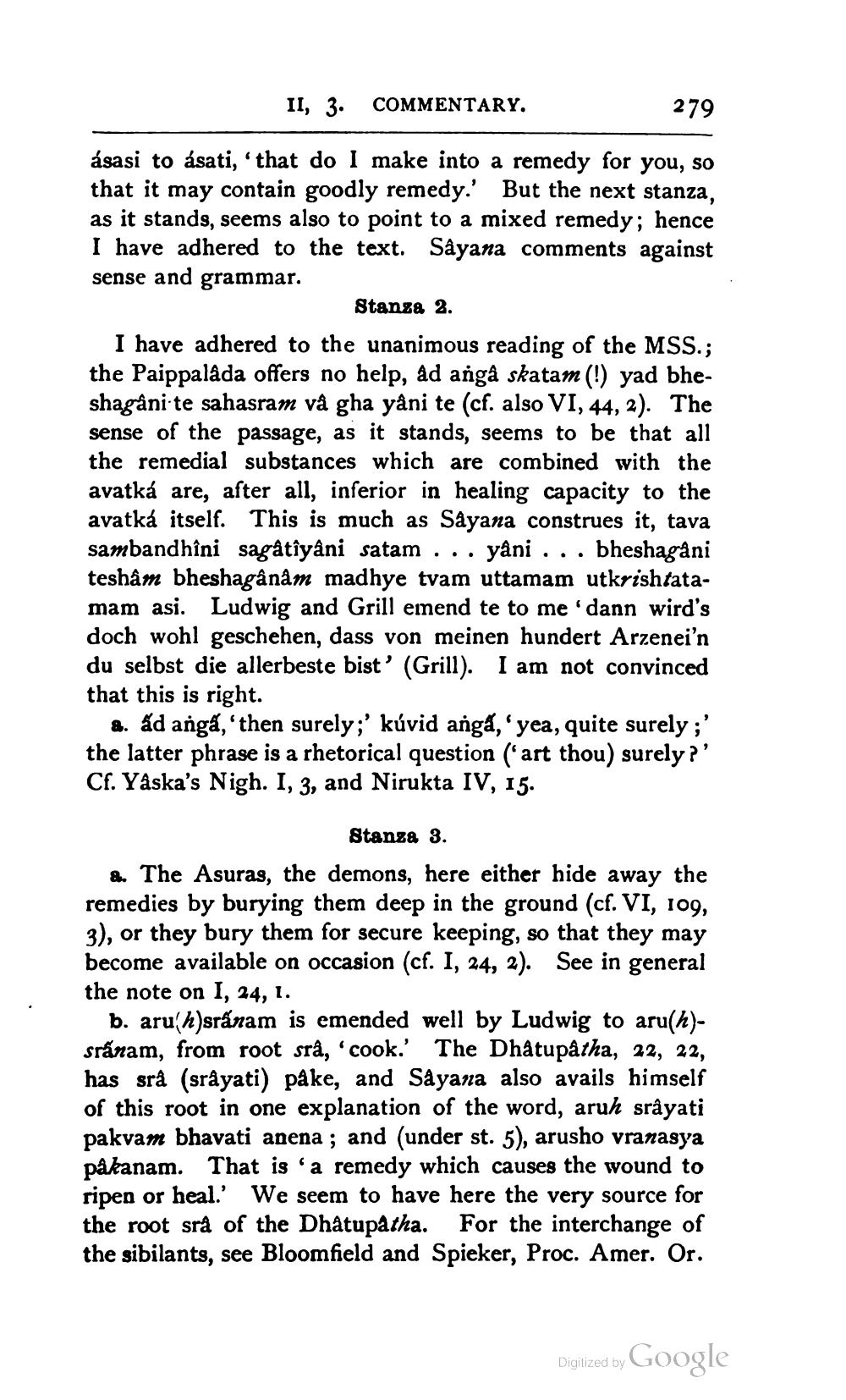________________
II, 3. COMMENTARY.
279
ásasi to ásati, 'that do I make into a remedy for you, so that it may contain goodly remedy.' But the next stanza, as it stands, seems also to point to a mixed remedy; hence I have adhered to the text. Sâyana comments against sense and grammar.
Stanza 2. I have adhered to the unanimous reading of the MSS.; the Paippalåda offers no help, ad angå skatam (!) yad bheshagânite sahasram và gha yâni te (cf. also VI, 44, 2). The sense of the passage, as it stands, seems to be that all the remedial substances which are combined with the avatká are, after all, inferior in healing capacity to the avatká itself. This is much as Sayana construes it, tava sambandhỉni sagatîyâni satam . . . yâni ... bheshagani teshâm bheshagânâm madhye tvam uttamam utkrishtatamam asi. Ludwig and Grill emend te to me'dann wird's doch wohl geschehen, dass von meinen hundert Arzenei'n du selbst die allerbeste bist' (Grill). I am not convinced that this is right.
2. ad angá,'then surely;' kúvid anga,' yea, quite surely;' the latter phrase is a rhetorical question ('art thou) surely?' Cf. Yåska's Nigh. I, 3, and Nirukta IV, 15.
Stanza 3. Ele The Asuras, the demons, here either hide away the remedies by burying them deep in the ground (cf. VI, 109, 3), or they bury them for secure keeping, so that they may become available on occasion (cf. I, 24, 2). See in general the note on I, 24, 1.
b. aru(h)sranam is emended well by Ludwig to aru(h)sranam, from root srå, 'cook.' The Dhâtupåtha, 22, 22, has srå (sråyati) påke, and Sayana also avails himself of this root in one explanation of the word, aruh sråyati pakvam bhavati anena ; and (under st. 5), arusho vranasya påkanam. That is 'a remedy which causes the wound to ripen or heal.' We seem to have here the very source for the root srå of the Dhatupatha. For the interchange of the sibilants, see Bloomfield and Spieker, Proc. Amer. Or.
Digized by Google




